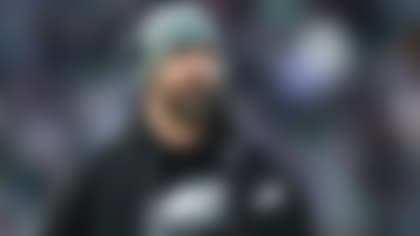NFL Evolution will feature a guest columnist every Tuesday, each with a different viewpoint of player health and safety from the youth level to pro football.
By Dr. Joseph F. Waeckerle, NFL Evolution columnist
What are some of the educational challenges student athletes face when returning to the classroom?
Concussions produce brain injuries that temporarily alter many areas of brain function. The concussed student-athlete may manifest these impairments by decline in cognitive (thinking) abilities, emotional instability, persistent complaints of physical symptoms, and abnormal behavior.
Cognitive impairments include poor attention and focus capabilities, poor concentration, difficulties in learning new information, memory difficulties, slowed information processing, slowed response time and poor reasoning and decision making.
Emotional responses are often exaggerated or otherwise inappropriate for his or her baseline personality, especially depression. The concussed student-athlete may voice physical complaints commonly associated with brain injuries such as headaches; a sense of fogginess; dizziness; visual problems; problems with sleep; intolerance of bright lights, loud sounds, and crowds.
Behaviorally, student-athlete may be increasing more irritable, moody, and intolerant of stressful situations and others.
The "rest then rehabilitation" approach started at home hopefully alleviates most of these impairments. Occasionally, however, some persist and affect school performance.
Upon return to school, academic allowances tailored to the concussed student-athlete are instituted as required by the continued presence and severity of the alterations. School professionals may employ considerations such as rest breaks with hydration and snacks in a quiet area, reduced workloads in school and with home assignments, less computer time and less exposure to media presentations especially films and videos.
Loud stimuli, bright lights, crowded spaces, and large gatherings should be avoided. Testing -- especially national or merit testing -- should not take place during the recovery period because the results may not reflect the concussed student's actual capabilities.
As the concussed student-athlete better tolerates the school atmosphere and rigors of school responsibilities, more demands can be made of him or her. If, however, teachers and staff notice diminished academic performance or troublesome behavior, these concerns should immediately be reported to the attending health care professional and family.
If the concussed student-athlete does not improve with the mental rehabilitation approach, then further evaluation and management by concussion specialists is warranted and more formal academic accommodations can be instituted as needed.
The concussed student-athlete should also not be permitted to engage in any physical activity at school until sanctioned to do so by the attending health care professional, especially any activity that might expose him or her to further brain trauma.
The goal of mental rehabilitation is that the concussed student-athlete displays normal physical, balance, and cognitive examinations, has resumed his or her academic demands, is performing normal daily activities requiring mild physical exertion, such as walking short distances or climbing the stairs at school and is asymptomatic for at least 24 hours. Once this goal is achieved, then the concussed student-athlete may engage in the physical rehabilitation protocol.
The Graduated Return-to-Play Protocol introduces physical activities based on the presence or absence of symptoms. This is a recognized standard protocol initially proposed in 2000 and recommended for use since then.
The student-athlete is supervised and monitored carefully by the attending health care professional trained and experienced in concussion care. The student-athlete progresses through the five stages of the protocol as long as no symptom or sign re-emerges during or after a prescribed functional exercise.
If symptomatic, then the student-athlete should be placed at rest until asymptomatic for 24 hours. At that point the student-athlete may attempt that level of functional exercise again. However, if any concussion symptom/sign reoccurs, reevaluation by the attending health care professional is indicated.
In the ideal situation, the student-athlete successfully completes the physical return-to-play protocol and is then cleared by the health care professional trained in the evaluation and management of concussions.
This individual approves the student-athlete for return to play by providing a signed release form explicitly stating that the student-athlete may be allowed to return to play in compliance with state regulations.
Dr. Joseph F. Waeckerle is clinical professor of emergency medicine at the University of Missouri-Kansas City School of Medicine. He also is editor emeritus of Annals of Emergency Medicine. He has practiced Emergency Medicine and Sports Medicine and has been a team physician at the grade school, high school, college, and profession level for over 30 years. He currently serves on the NFL Head, Neck, and Spine Injury Committee and the Mackey White Brain Injury Committee of the NFL Players Association.



